|

Luigi Galvani
(1737 - 1798) |
Luigi Galvani is famous for his discovery that when a
nerve was touched by a metal knife during the discharge of a nearby
electrical machine, the leg would twitch. He attributed this phenomena to
animal electricity, meaning he believed there was electricity in the
frog muscle similar to that found in an electric eel. In 1791 he
published "De Viribus..." (below left) where he made his discovery
public. This book established the foundation of electrophysiology, and
launched the modern science of electricity.. The elegant plates of electric
apparatus and frog specimens (see below) are among the most famous images
in biology.
Publication of this paper sparked a lively debate between Galvani and
Alessandro Volta. Volta believed that Galvani was wrong, and in his
efforts to prove that the muscle was reacting to a small electrical charge,
Volta developed the basic research that led directly to his development of
the electric battery (the Volta pile) in 1800. The Volta pile provided
continuous electric current for the first time, making possible virtually
every electric invention to follow.
Galvani continued his experiments and in 1794 published "Dellí
uso e dellí attivita..." (below right) in which he began the account of
his electrical experiments without the presence of metals. The
experiments demonstrated the presence of electrical energy in living tissue
by showing that convulsions in frog nerve-muscle preparations could be
produced simply by touching nerve to muscle.
|

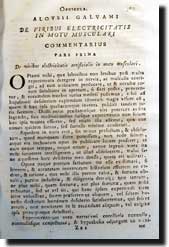
De Viribus Electricitatis in Motu Musculari
Luigi Galvani
1791
|
|
 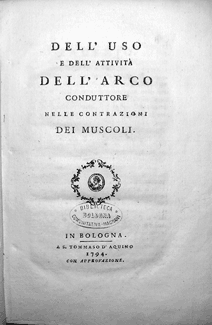
Dellí uso e
dellí attivita dellí arco conduttore nelle contrazioni dei muscoli
Luigi Galvani
1794 |
|
|
Copperplate Illustrations from
"De Viribus Electricitatis in Motu
Musculari":
|
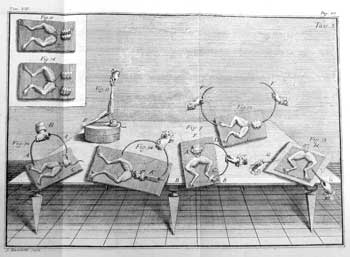
|
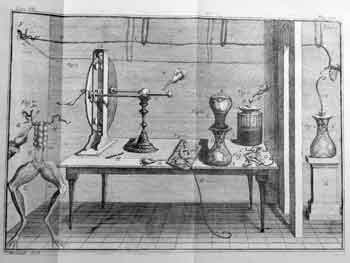
|
|
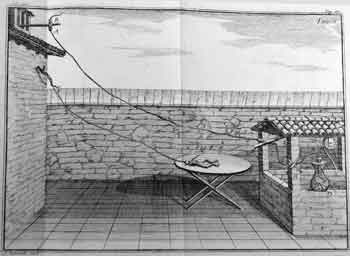
Experiments with atmospheric
electricity (lightning) |

Additional experiments with larger
animals |
|
|